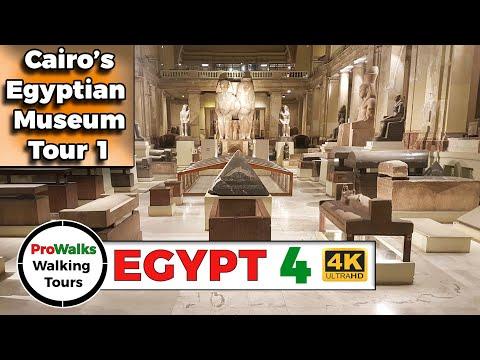As I stepped into the Egyptian Museum in Cairo, the grandiosity of the entrance was immediately striking. The building’s imposing neoclassical facade was both majestic and humbling. I adjusted my camera and took a deep breath, preparing myself for the journey into the heart of ancient Egypt that awaited me.
The first floor of the museum, dedicated to a wide array of artifacts from different dynasties, seemed almost like an endless corridor of history. The walls, lined with intricate bas-reliefs and hieroglyphics, guided me as I walked through this treasure trove. My eyes were drawn to the colossal statues that stood like silent sentinels, each telling its own story of gods and pharaohs.
My first stop was the exhibit dedicated to the Old Kingdom, often referred to as the Age of the Pyramids. I marveled at the sheer scale of the statues of pharaohs like Khufu and Snefru. The life-size statue of Khufu, with its serene yet authoritative expression, was particularly captivating. It was as if he were gazing into the future, watching over the centuries that would follow. I couldn’t help but imagine the grandeur of the Giza Plateau during his reign, with the Great Pyramid looming over the landscape as a testament to his power.
Moving on, I found myself standing in front of a display showcasing a series of mummies and sarcophagi. The craftsmanship of these ancient burial items was astonishing. I took a moment to appreciate the meticulous detail on the decorated coffins, each one a masterpiece of art and engineering. The golden mask of Tutankhamun was the highlight of this section. The mask’s brilliance, with its intricate lapis lazuli inlays and the vivid colors of the enamel, was even more breathtaking up close. It was hard to believe that such a small, relatively unknown pharaoh had left behind such an extravagant and richly adorned resting place.
I wandered further into the museum, and the artifacts from the Middle Kingdom drew my attention next. This period, characterized by a resurgence of artistic and cultural activity, was richly represented through beautifully carved stelae and statues. One particular piece that caught my eye was a statue of the god Horus. The falcon-headed deity, depicted with an elegance and grace, seemed almost to be in mid-flight. The craftsmanship was exquisite, and I could easily imagine it being placed in a temple, watching over worshippers.
My exploration continued into the New Kingdom section, a time of great power and expansion for Egypt. The display of royal statues and monumental inscriptions was truly awe-inspiring. The statues of Ramses II, with their grand proportions and commanding presence, spoke volumes about his reign. I was particularly struck by a colossal head of Ramses II, which, despite its fragmentary state, exuded an undeniable sense of majesty. It was clear that Ramses had been a figure of immense stature, both literally and figuratively.
One of the more personal moments of the tour was encountering a small, delicate sculpture of a seated scribe. His posture was relaxed, and the look on his face was one of quiet contemplation. It was a stark contrast to the grandiosity of the pharaohs’ statues, yet it conveyed a sense of the importance of the scribes in ancient Egyptian society. The attention to detail in this small figure made it clear that even those in less prominent positions were valued and respected.
As I continued my tour, I stumbled upon an exhibit showcasing a collection of everyday items from various periods of Egyptian history. The pottery, tools, and personal items were fascinating, providing a glimpse into the daily lives of ancient Egyptians. The simple beauty of a well-crafted pottery shard or the intricate design on a piece of jewelry made me reflect on the continuity of human creativity and craftsmanship across millennia.
By the time I reached the end of the first floor, I felt a profound connection to the ancient world. The artifacts, each with its own story and significance, created a rich tapestry of history that was both educational and deeply moving. As I made my way toward the exit, I couldn’t help but feel a sense of gratitude for the opportunity to witness such incredible relics of a bygone era.
Leaving the museum, I was struck by the thought of how these ancient treasures had traveled through time to find a place in this magnificent building. The Egyptian Museum in Cairo was not just a repository of artifacts but a living testament to the enduring legacy of one of the world’s greatest civilizations. The first floor alone offered a journey through thousands of years of history, and I knew that this was only the beginning of what this incredible museum had to offer.
